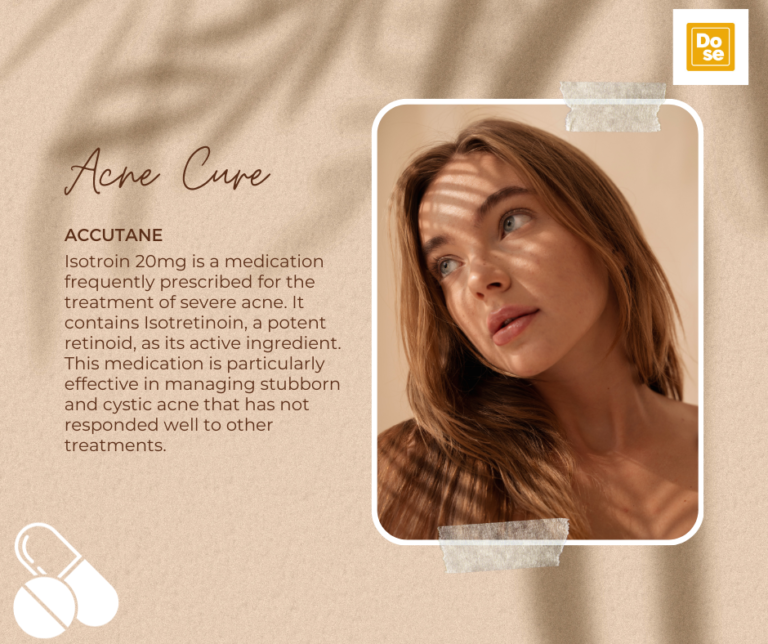Acne is a common skin condition that affects millions of people worldwide, regardless of age, gender, or ethnicity. While it’s often associated with adolescence, skin acne can persist into adulthood and cause significant emotional distress. Understanding acne and how to treat it effectively is crucial for maintaining healthy, clear skin. This blog will demystify acne by exploring its causes, types, and effective treatment options like accutane for acne.
What is Acne?
Acne occurs when hair follicles become clogged with oil (sebum) and dead skin cells. This environment promotes the growth of bacteria, leading to inflammation and the formation of pimples, blackheads, and whiteheads. Acne typically appears on the face, neck, chest, back, and shoulders, where sebaceous glands are most abundant.
Causes of Acne
Several factors contribute to the development of acne:
- Hormonal Changes: Androgens, hormones that increase during puberty, cause sebaceous glands to enlarge and produce more sebum. Hormonal fluctuations during menstruation, pregnancy, and menopause can also trigger acne in women.
- Genetics: A family history of acne can increase the likelihood of developing the condition.
- Diet: Some studies suggest that certain foods, such as dairy products and high-glycemic-index foods, may worsen acne.
- Stress: Stress doesn’t directly cause acne but can exacerbate it by increasing hormone levels that stimulate oil production.
- Medications: Drugs containing corticosteroids, androgens, or lithium can contribute to acne.
Types of Acne
Understanding the different types of acne can help in identifying the appropriate treatment:
- Comedonal Acne: Characterized by blackheads (open comedones) and whiteheads (closed comedones).
- Inflammatory Acne: Includes papules, pustules, nodules, and cysts. These types are often red, swollen, and painful.
- Cystic Acne: A severe form of acne that involves large, painful, pus-filled cysts deep under the skin.
Effective Acne Treatments
Effective acne treatment often involves a combination of lifestyle changes, over-the-counter (OTC) products, and prescription medications. Here are some proven strategies:
Skincare Routine:
- Cleansing: Use a gentle, non-comedogenic cleanser to remove excess oil and impurities without irritating the skin.
- Exfoliation: Regular exfoliation helps remove dead skin cells that can clog pores. Use products containing salicylic acid or glycolic acid.
- Moisturizing: Even oily skin needs hydration. Opt for oil-free, non-comedogenic moisturizers.
- Sun Protection: Apply a broad-spectrum sunscreen daily to protect your skin from UV damage and prevent acne scars from darkening.
OTC Treatments:
- Benzoyl Peroxide: Reduces bacteria and inflammation.
- Salicylic Acid: Helps unclog pores and reduce swelling.
- Retinoids: Promote cell turnover and prevent clogged pores.
Prescription Medications:
- Topical Antibiotics: Reduce bacteria and inflammation.
- Oral Antibiotics: Used for moderate to severe acne to reduce bacteria and inflammation.
- Oral Contraceptives: Can help regulate hormones in women with acne.
Isotretinoin: A powerful oral medication for severe, cystic acne is Isotretinoin 20mg . It significantly reduces oil production and inflammation.
Lifestyle Changes:
- Diet: Incorporate a balanced diet rich in fruits, vegetables, and whole grains. Limit dairy and high-glycemic foods.
- Hydration: Drink plenty of water to keep your skin hydrated.
- Stress Management: Practice relaxation techniques such as yoga, meditation, or deep breathing exercises.
Conclusion
Acne can be a persistent and frustrating condition, but understanding its causes and types can help in finding effective treatments. Maintaining a consistent skincare routine, using appropriate OTC products, and seeking medical advice for prescription treatments can significantly improve your skin’s health and appearance. Remember, patience and persistence are key, as it may take time to see results. If you’re struggling with acne, consult a dermatologist to develop a personalized treatment plan tailored to your specific needs.


